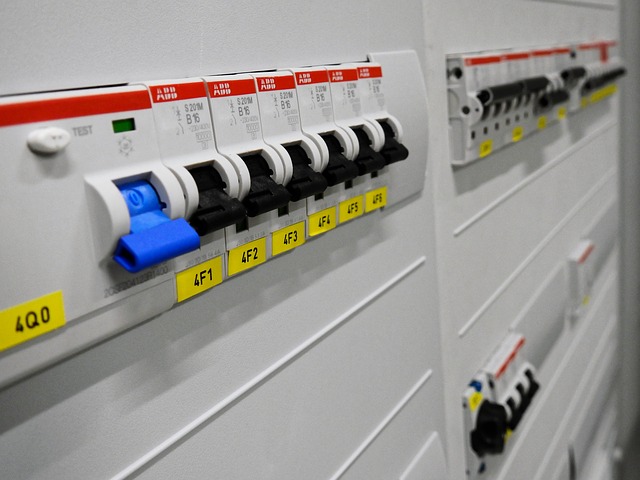
What is a circuit breaker?
A circuit breaker is an electrical switch designed to protect an electrical circuit from damage caused by overcurrent/overload or a short circuit. Its basic function is to interrupt current flow after protective relays detect a fault.
Types of Circuit Breaker
Circuit breakers are mainly classified based on rated
voltages. Circuit breakers below rated voltage of 1000V are known as the low
voltage circuit breakers and above 1000V are called the high voltage circuit
breakers.
The most general way of classification of the circuit breaker is based on the medium of arc extinction. Such types of circuit breakers are as follows:
- - Oil Circuit Breaker
- - Minimum Circuit Breaker
- -Air Blast Circuit Breaker
- -Sulphur Hexafluoride Circuit Breaker
- -Vacuum Circuit Breaker
- -Air Break Circuit Breaker
Circuit breaker components
Although low and medium voltage circuit breakers have unique designs that are specific to amperage, voltage, and application, five main components are universal across the different types of circuit breakers.
The five universal circuit breaker components are:
-
Frame – Protects internal parts of the circuit
breaker from outside materials
-
Operating mechanism – Provides a means of
opening and closing the circuit breaker
-
Contacts – Allows the current to flow through
the circuit breaker when closed.
-
Arc extinguisher – Extinguishes an arc when the
circuit breaker interrupts a fault.
PRINCIPLES OF CIRCUIT BREAKERS
Internally, circuit breakers are made up of pairs
of metallic contacts, both fixed and moving, in addition to an operating coil.
Under normal conditions – closed circuit – these contacts
are touching each other, allowing the flow of electric current. These moving
contacts are held together thanks to mechanical pressure exerted by another
mechanism – a spring or compressed air, for example.
As the moving contacts separate, the circuit inside the CB
(circuit breaker) opens, interrupting the flow of current and protecting the system
from further damage.
However, it is important that you also understand the
concept of “arcâ€.
When electrical current passes through an air gap from an
energized component to a neutral component, a plasma discharge known as arc
occurs. As an example, lightning is a very large arc, crossing atmospheric
space from a cloud to the ground or another cloud.
Arcing can also occur in household electrical wiring, but
also within circuit breakers during operation, which can damage them and cause
fires if the arc is not controlled.
Therefore, the mechanism of circuit breakers also seeks to
prevent or control, as much as possible, the generation of these electric arcs.
Circuit breakers alone cannot guarantee 100% of the safety
of an electrical system. For that reason, some components can –
and sometimes should – be added to electrical circuits to further improve the
overall level of protection e.g., a surge arrester.
The fundamental function of circuit breakers is to
constantly “verify†that the electrical charge does not exceed the safety
limits and if so, stop the operation of the electrical circuit automatically,
to avoid damage to the electrical installation in general.
Are you sourcing for circuit breakers? Search no more. Click
here to start sourcing.
 Share
Share